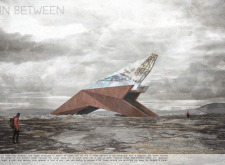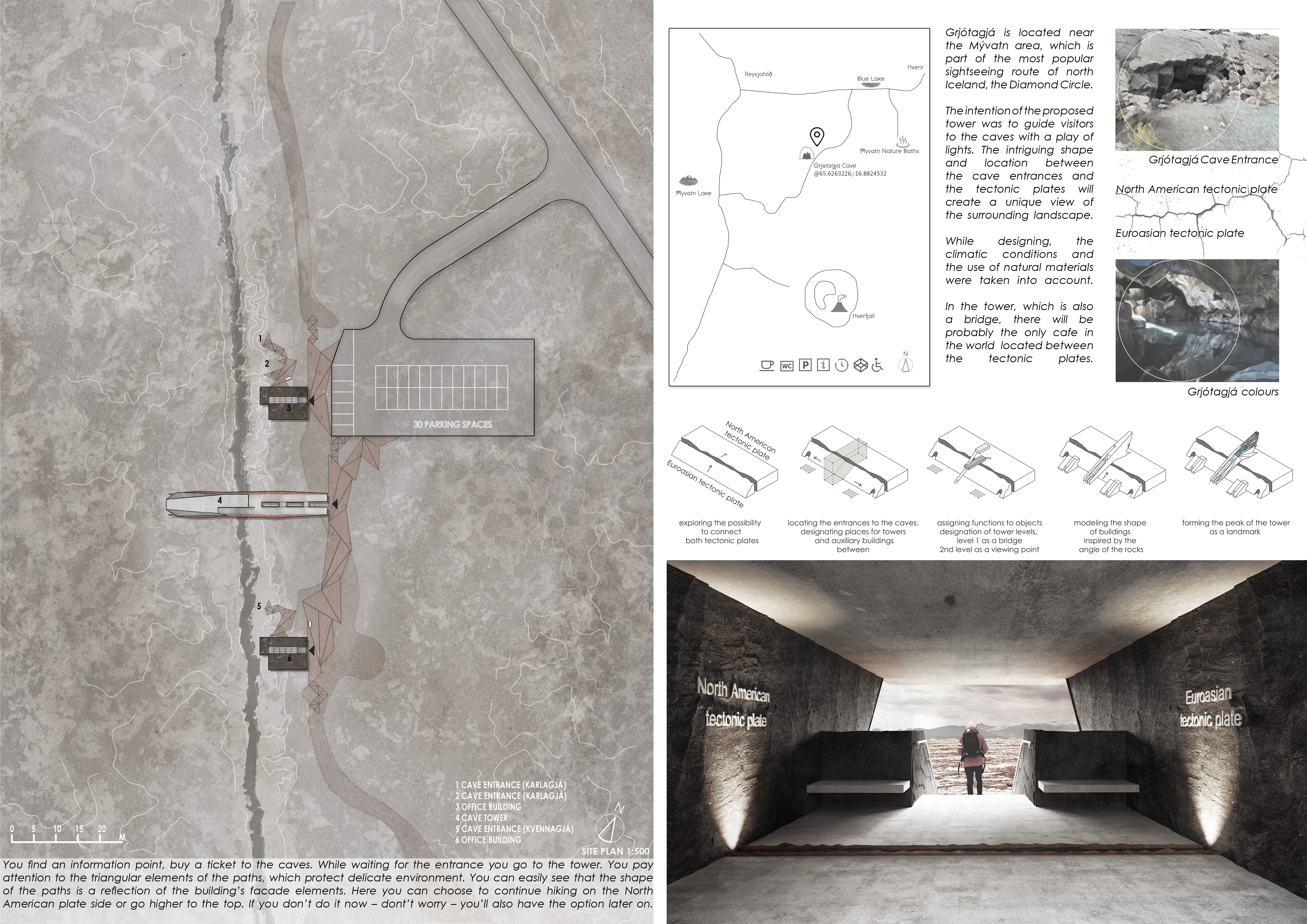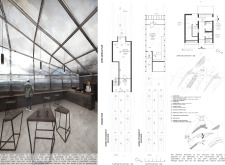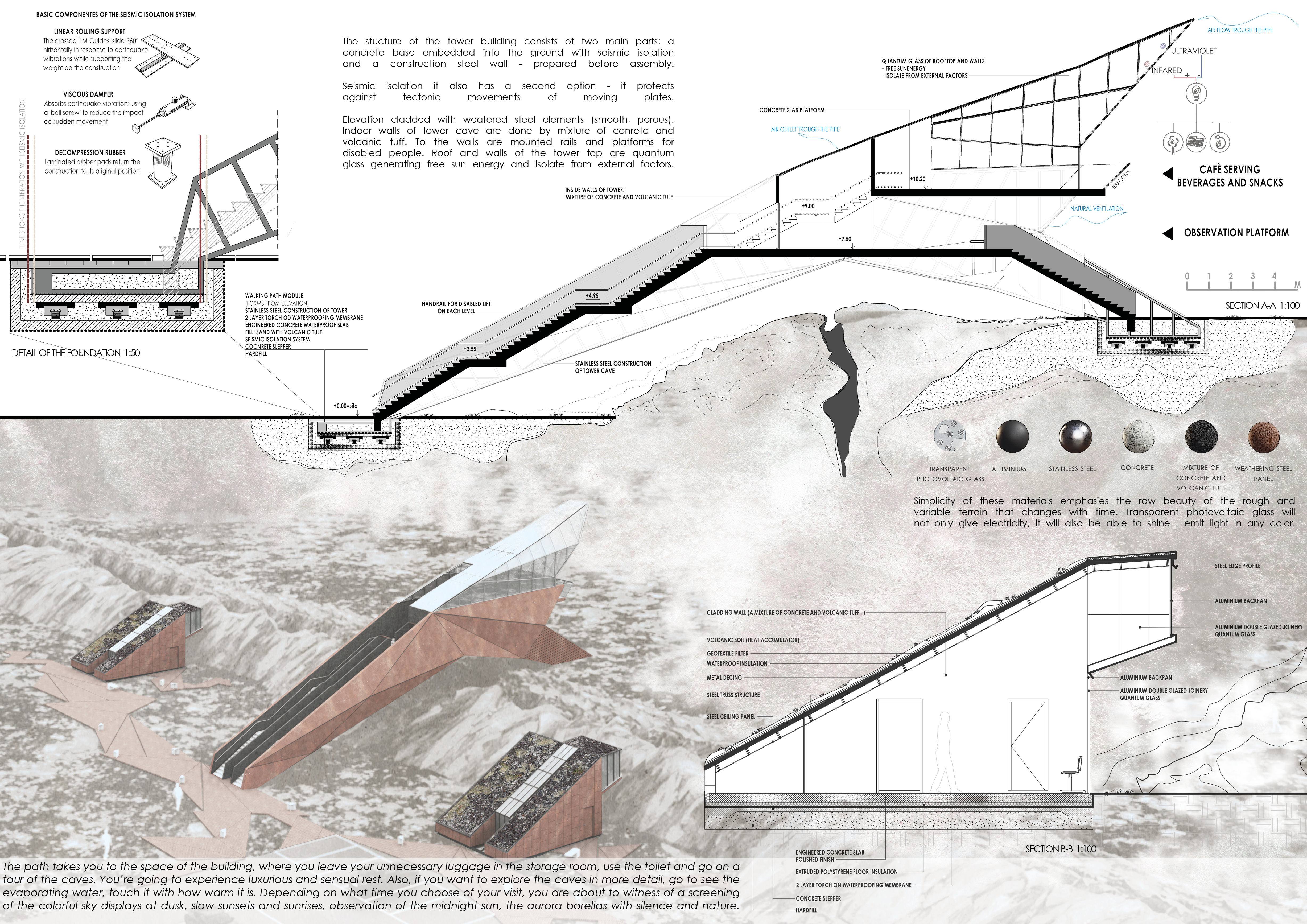5 key facts about this project
The visitor center incorporates various functionalities, including an information point, refreshment areas, and observation platforms. These elements work cohesively to support visitors in their exploration of the area’s geological features, allowing for a deeper understanding of Iceland's unique terrain. The design effectively channels foot traffic and guides visitors through the site, emphasizing a natural flow while ensuring accessibility to the caves and surrounding viewing areas.
One of the distinctive features of the Grjótagjá Visitor Center is its design approach that emphasizes context and materiality. The structure utilizes weathered steel cladding, which blends into the rugged environment and evolves over time, mirroring the geological transformations occurring around it. This choice of material not only reinforces the project's connection to the landscape but also promotes longevity in terms of maintenance and durability. Transparent photovoltaic glass is incorporated into the design to provide natural light and panoramic views of the surroundings while also serving a functional purpose in energy generation.
The building’s foundation incorporates a seismic isolation system, addressing the site’s geological activity. This engineering solution ensures stability while maintaining the integrity of the architectural design. Additionally, natural ventilation strategies have been integrated to enhance thermal comfort throughout the varying seasons, reflecting a commitment to sustainability and environmental considerations.
The Grjótagjá Visitor Center stands apart from similar projects due to its integration of educational and recreational functions within a geological context. Its design promotes visitor engagement with the natural environment while also providing necessary facilities. The observer platforms and pathways encourage an active exploration of the site, allowing visitors to appreciate the nuances of Iceland’s geological landscapes firsthand.
In summary, the architectural design of the Grjótagjá Visitor Center represents a thoughtful blend of function, design, and environmental context. The careful selection of materials, advanced engineering practices, and interactive spatial organization create an experience that emphasizes the region's geological significance. For further exploration, including detailed architectural plans, sections, and design ideas, readers are encouraged to engage with the project presentation to gain comprehensive insights into this architectural endeavor.


























